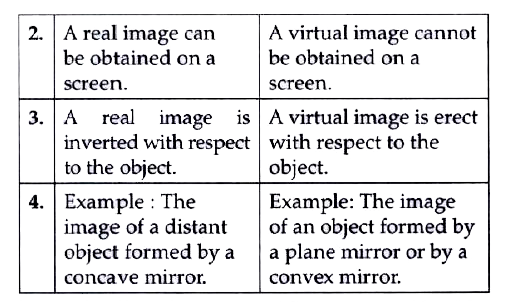Differentiate between a real and a virtual image.
Video Solution
Text Solution
The difference the real and virtual image are:


|
Updated on:21/07/2023
Related Playlists
- BOOK - ICSECHAPTER - LIGHTEXERCISE - TOPIC 1 Reflections of Light (3 Marks Questions )19videos
LIGHT
- BOOK - ICSECHAPTER - LIGHTEXERCISE - TOPIC 1 Reflections of Light (4 Marks Questions )10videos
LIGHT
- BOOK - ICSECHAPTER - LAWS OF MOTIONEXERCISE - EXERCISE - 3(E) (Numericals)31videos
LAWS OF MOTION
- BOOK - ICSECHAPTER - MAGNETISM EXERCISE - EXERCISE-10(B) (Multiple Choice Type)2videos
MAGNETISM
Similar Questions
Differentiate between an artery and a vein.
View SolutionDifferentiate between a mineral and an ore.
View SolutionDifferentiate between Bulb and tuber
View SolutionDifferentiate between
an organ and an organelleView SolutionDifferentiate between work and power.
View SolutionDifferentiate between Tissue and organ
View SolutionDifferentiate between an egger and a broiler.
View SolutionDifferentiate between Stoma and Stroma
View SolutionDifferentiate between Blood and lymph
View SolutionDifferentiate between energy and power
View Solution


